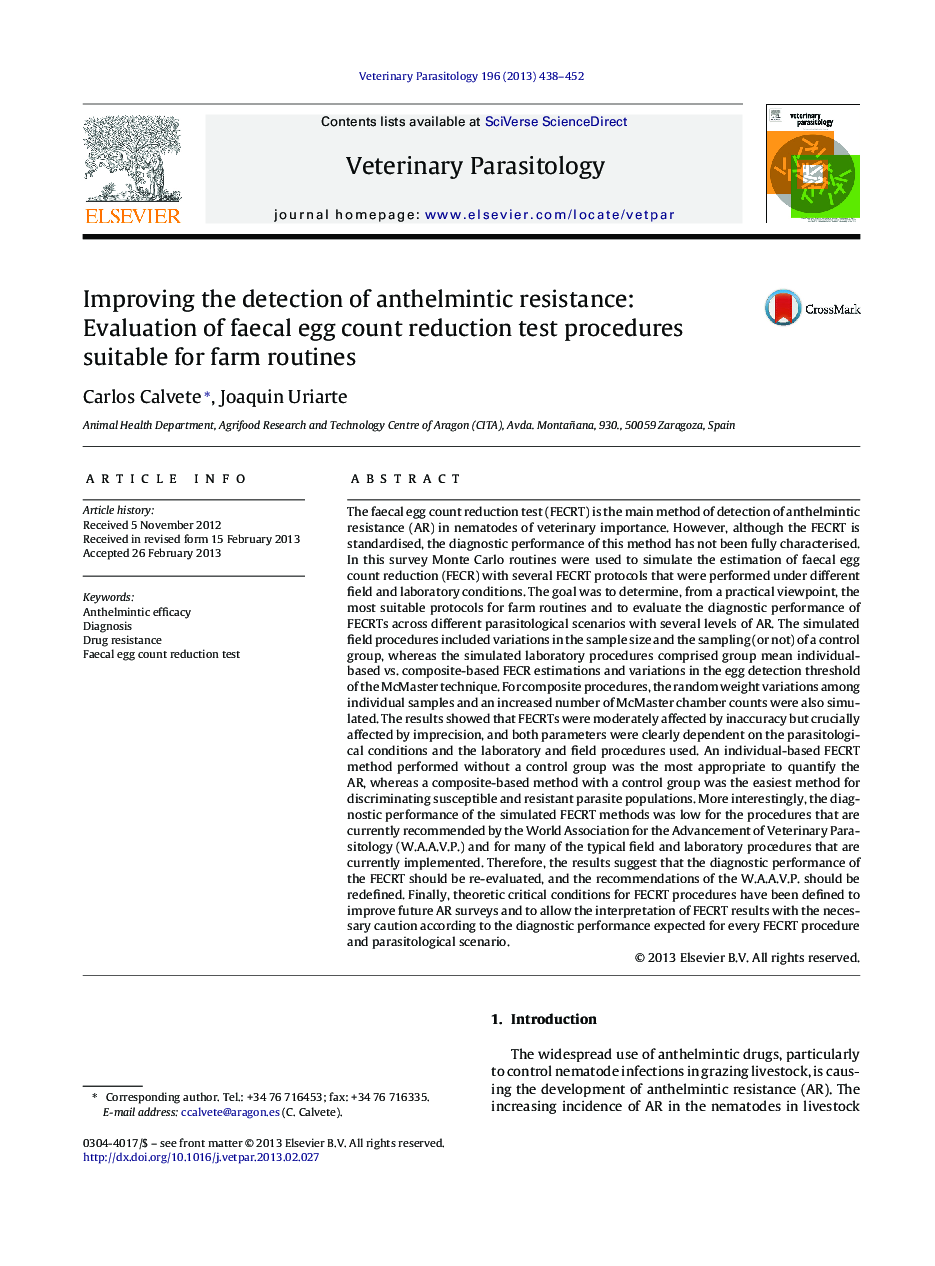| Article ID | Journal | Published Year | Pages | File Type |
|---|---|---|---|---|
| 5804205 | Veterinary Parasitology | 2013 | 15 Pages |
The faecal egg count reduction test (FECRT) is the main method of detection of anthelmintic resistance (AR) in nematodes of veterinary importance. However, although the FECRT is standardised, the diagnostic performance of this method has not been fully characterised. In this survey Monte Carlo routines were used to simulate the estimation of faecal egg count reduction (FECR) with several FECRT protocols that were performed under different field and laboratory conditions. The goal was to determine, from a practical viewpoint, the most suitable protocols for farm routines and to evaluate the diagnostic performance of FECRTs across different parasitological scenarios with several levels of AR. The simulated field procedures included variations in the sample size and the sampling (or not) of a control group, whereas the simulated laboratory procedures comprised group mean individual-based vs. composite-based FECR estimations and variations in the egg detection threshold of the McMaster technique. For composite procedures, the random weight variations among individual samples and an increased number of McMaster chamber counts were also simulated. The results showed that FECRTs were moderately affected by inaccuracy but crucially affected by imprecision, and both parameters were clearly dependent on the parasitological conditions and the laboratory and field procedures used. An individual-based FECRT method performed without a control group was the most appropriate to quantify the AR, whereas a composite-based method with a control group was the easiest method for discriminating susceptible and resistant parasite populations. More interestingly, the diagnostic performance of the simulated FECRT methods was low for the procedures that are currently recommended by the World Association for the Advancement of Veterinary Parasitology (W.A.A.V.P.) and for many of the typical field and laboratory procedures that are currently implemented. Therefore, the results suggest that the diagnostic performance of the FECRT should be re-evaluated, and the recommendations of the W.A.A.V.P. should be redefined. Finally, theoretic critical conditions for FECRT procedures have been defined to improve future AR surveys and to allow the interpretation of FECRT results with the necessary caution according to the diagnostic performance expected for every FECRT procedure and parasitological scenario.
